Patents have a maximum term and cannot be renewed. This is part of the quid pro quo underlying modern patent law. The patentee gets exclusive rights for a limited time but then the technology disclosed in expired patents can be freely used by the public (in at least the jurisdiction that issued the patent). Knowing how to calculate patent term is therefore important in order to determine when a given patent has expired. But, for better or worse, the term of any given patent can vary. There is no single fixed term for all U.S. patents. And the applicable term is not always apparent on the face of a given patent. So how is patent term calculated for U.S. patents?
USPTO Patent Term Calculator
One of the simplest and most practical ways to determine the term of a given U.S. patent is to utilize a patent term calculator provided by the U.S. Patent & Trademark Office (USPTO). Using this downloadable spreadsheet requires inputting certain information about a given patent. Only some of the necessary information appears printed on a granted patent. Other information must be researched in USPTO records, mainly through Patent Center.
The advantage of the USPTO’s patent term calculator is that it can be used by anyone, even people who do not understand the applicable patent laws. However, it still requires ascertaining the correct information to enter in the spreadsheet. That requires knowing where to find such information. The patent term calculator also requires a level of confidence that the correct information is being entered. That is, it still requires knowing some of the terminology so that correct, relevant information is entered.
Read on for more information about the sorts of information relevant to proper patent term calculations.
Relevant Factors
What follows is a more detailed explanation of factors that determine the enforceable term of a given patent. These factors include factors that influence how to calculate a given patent’s term, as well as things that might cut short the enforceable term of a given patent. In any given instance, consulting with a knowledgeable patent attorney is recommend to determine the correct term of any given U.S. patent.
Type of Patent
Paten term first of all depends on the type of patent involved.
U.S. utility and plant patents have a basic term of 20 years from the relevant filing date (35 U.S.C. § 154)—there being some nuance about which filing date is used here.

A priority claim to a foreign patent application (stemming from the Paris Convention or a PCT application that did not designate the USA) or to a prior U.S. provisional patent application does not count against the term (35 U.S.C. § 154(a)(3)). This means a foreign priority or prior provisional filing can effectively extend patent term.

For regular PCT national phase entries to the USA, the PCT international filing date is used for term calculation (not the date of later U.S. national phase entry). That is, a PCT international application designating the United States is treated as a U.S. application (see 35 U.S.C. §§ 372 and 375), with the national phase being just a different phase of the same application. So an ordinary national phase entry into the United States does not, by itself, involve a “priority” claim–although there may additionally be a priority claim involved.
The so-called domestic benefit of a prior U.S. non-provisional application (that is, for a continuation, continuation-in-part, or divisional application under 35 U.S.C. §§ 120, 121, 365(c), or 386(c), including PCT “bypass” applications) does count against patent term, so the term calculation should be based on the earliest such prior filing date. In other words, continuing applications that have priority/domestic benefit of a prior U.S. non-provisional application will have a reduced patent term. The related U.S. application data field (INID code 63) on the face of a patent, if present, can indicate an earlier filing date that may impact term.

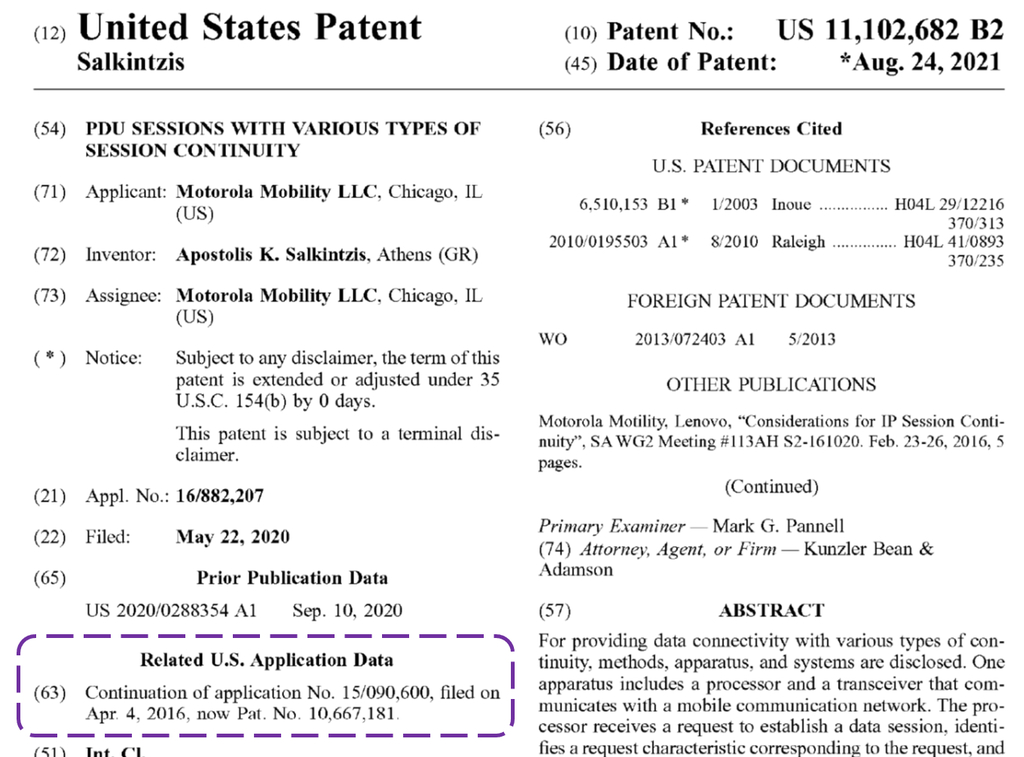
In contrast, U.S. design patents currently have a fixed basic term of 15-years from the date of grant (35 U.S.C. § 173). The filing date issues referenced above do not impact design patent term. This means that continuing design patents can potentially have later expiration dates, unlike with utility and plant patents.

Reissue patents are possible “for the unexpired part of the term of the original patent.” (35 U.S.C. § 251). This means that a reissue patent’s term is no longer than the term of the original patent, as subject to any extension or adjustment. It is possible that a reissue patent’s term could be shorter than that of the original patent (see discussion of terminal disclaimers below). But reissue does not lengthen patent term.
Filing Date and Changes in the Law
The laws around patent term have changed over time. Some patents applied for or granted prior to those changes in the law may be subject to a different term.
U.S. utility and plant patents applications filed before June 8, 1995 can have a term of 17 years from the date or grant rather than from the earliest applicable filing date. Any patent that was in force on June 8, 1995 will have a term that is the greater of the 20-year term as discussed above or 17 years from grant (35 U.S.C. § 154(c)).
For U.S. design patents, those issued from design applications filed before May 13, 2015 have a 14-year term from the date of grant (rather than 15-years from grant).
Of course, there may be future changes in the law that affect patent term calculations. And courts may issue decisions that affect the interpretation of laws that impact patent term calculations.
Patent Term Adjustment
Certain delays in examination can lead to an adjustment of patent term for a given original patent (but not for a reissue). This is called patent term adjustment (PTA) under 35 U.S.C. § 154(b). Normally, this PTA is calculated as the number of days beyond the basic 20-year term that the patent can remain in force. The PTA period normally appears on the face of each granted patent—typically in a “Notice” field denoted with an asterisk (*). The USPTO’s Patent Center portal also has a menu tab showing detailed PTA calculations for a given patent. However, it is possible for a patentee to challenge the USPTO’s PTA calculation in some circumstances, meaning the PTA period might be corrected later. PTA does not apply to design patents.
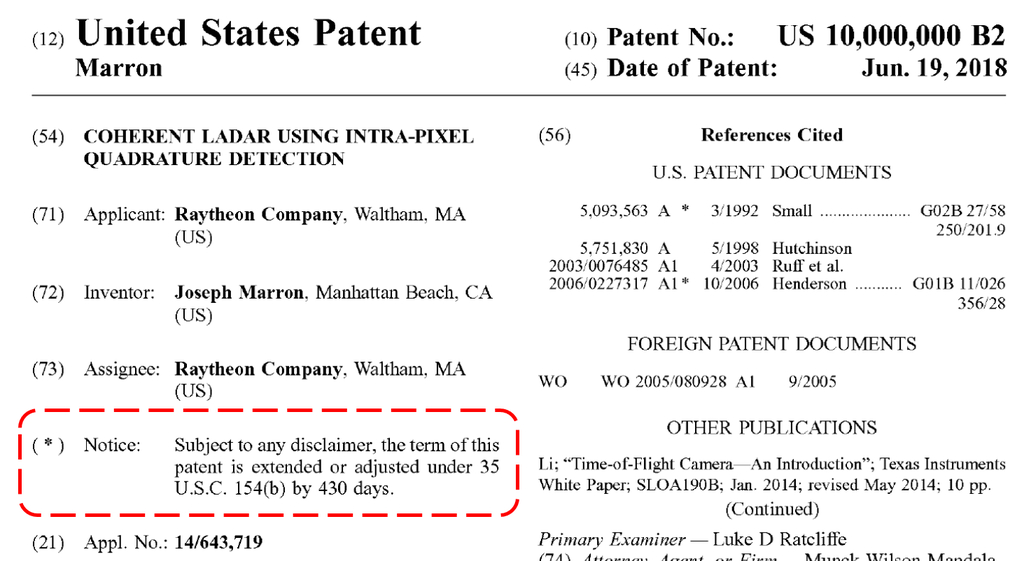
Patent Term Extension
Patentees can potentially obtain patent term extension (PTE) under 35 U.S.C. § 156 based upon premarket regulatory review of certain human drugs, food or color additives, medical devices, animal drugs, and veterinary biological products. This restores some term lost while awaiting premarket government approval from a regulatory agency. An application for PTE must be submitted within sixty (60) days of when permission for commercial marketing or use occurred. Patentees have to affirmatively apply for PTE, which is not automatically granted. Also, PTE is only possible for patents on certain types of subject matter; it does not apply to design or plant patents. § 156 PTE is not indicated on granted patents and must be researched in USPTO records, mainly through Patent Center.
Disclaimers
A given patent may be subject to a disclaimer (35 U.S.C. § 253). The two types of disclaimers are a terminal disclaimer or a statutory disclaimer.
In a terminal disclaimer, the patentee disclaims or dedicates to the public a portion of the term of a given patent. That is, the term of the patent is shortened from what it might otherwise be. Terminal disclaimers are frequently used to overcome double patenting, by disclaiming the period of patent term (if any) that would extend beyond that of one or more other patents. They are also used when design patent applications are revived after abandonment, disclaiming a period of patent term equal to the period of abandonment. Terminal disclaimers do not affect § 156 PTE, however.
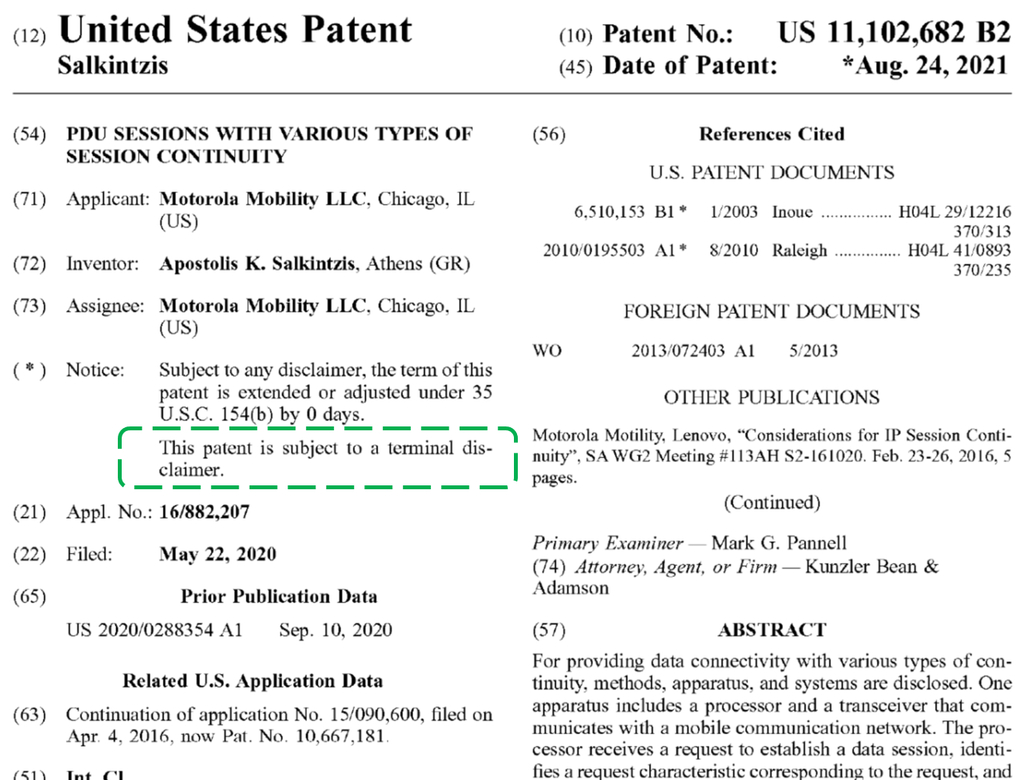
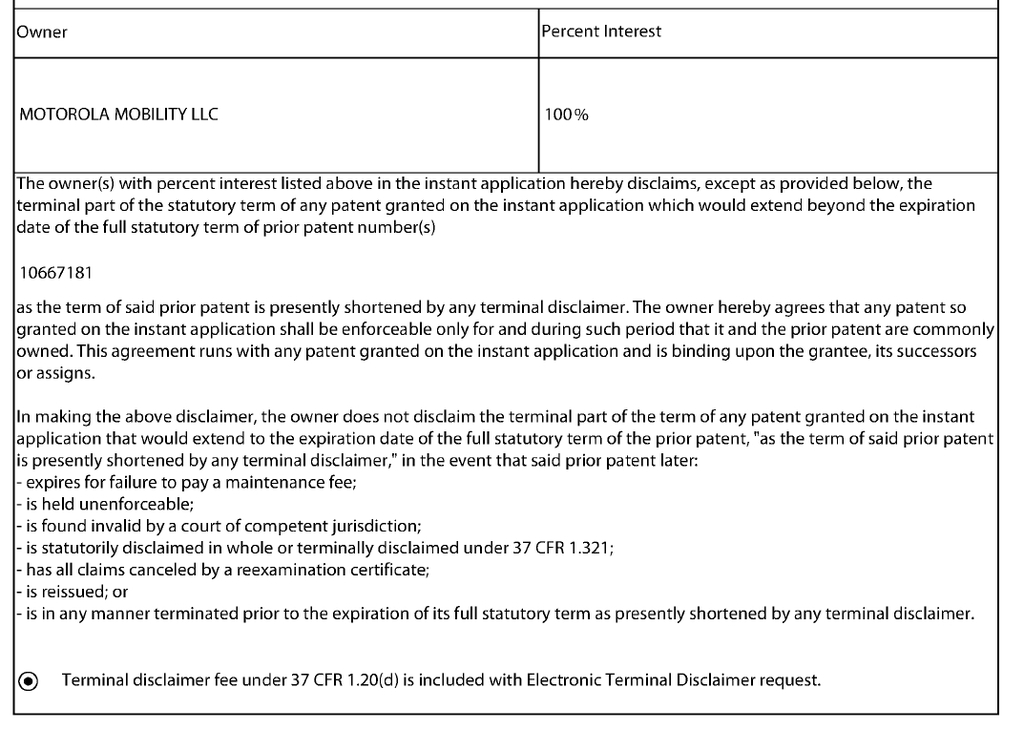
The USPTO has sometimes, but not always, printed an indication that a given patent is subject to a terminal disclaimer on the front page of the patent. Terminal disclaimers can also arise after a patent has been granted. In any event, the duration (and possibly also the existence) of a terminal disclaimer must be researched in the prosecution history of the relevant patent in USPTO records. This can generally be done using the online Patent Center portal and viewing the “Documents & Transactions”. Although the calculation of the disclaimed period may require additional research and analysis. For instance, it may be necessary to calculate the term of one or more other patents or the period of applicant delay for a design patent.
For statutory disclaimers, one or more claims of a patent are effectively surrendered. This means that some claims may no longer be in force, even though other claims might.
Lapse or Expiration for Non-Payment of Maintenance Fees
In order to keep a given U.S. utility patent in force, periodic maintenance fees are required (35 U.S.C. § 41(b)). These are due by four, eight, and twelve years from the grant of the patent. However, there are no maintenance fees required for U.S. design patents or plant patents (37 C.F.R. § 1.362(b)).
If a maintenance fee is not paid on time, then the patent will lapse or expire. This means that a given utility patent might no longer be in force even though it has not yet reached its maximum possible term.
What makes lapses/expirations complicated is that the patentee may be able to reinstate (that is, revive) the patent if a maintenance fee payment deadline was missed unintentionally. This may give rise to intervening rights (35 U.S.C. § 41(c)(2)). So, significantly, the expiration or lapse of the U.S. patent due to a missed maintenance fee may not mean the final and absolute end of rights in that patent if late payment is accepted.
Terminology describing this lapses/expiration for non-payment of maintenance fees has varied. The USPTO currently tends to use “expiration” but “lapse” is a better term because it differentiates situations where revival is possible from those in which a patent’s term has expired permanently because it has reached its maximum limit.
Invalidation and Cancellation
Patents can be invalidated by courts or cancelled by the USPTO, usually as the result of a challenge by another entity. This can affect all or merely some claims of a patent. Such an adverse ruling (after exhaustion of all rights of appeal) can end or limit rights in the patent short of its maximum possible term. It is necessary to research the existence and status of such an adverse ruling, if any.
Withdrawn Patents
Lastly, some patent numbers have been withdrawn by the USPTO. These were essentially never really patents in the first place, for various reasons, and thus have no term. Although, to complicate matters, the USPTO has also reinstated some previously withdrawn patents.
Laws Vary by Jurisdiction
The discussion above pertains only to U.S. patents. In other countries, laws may differ regarding the calculation of patent term, the availability of supplementary protection certificates, and so on.
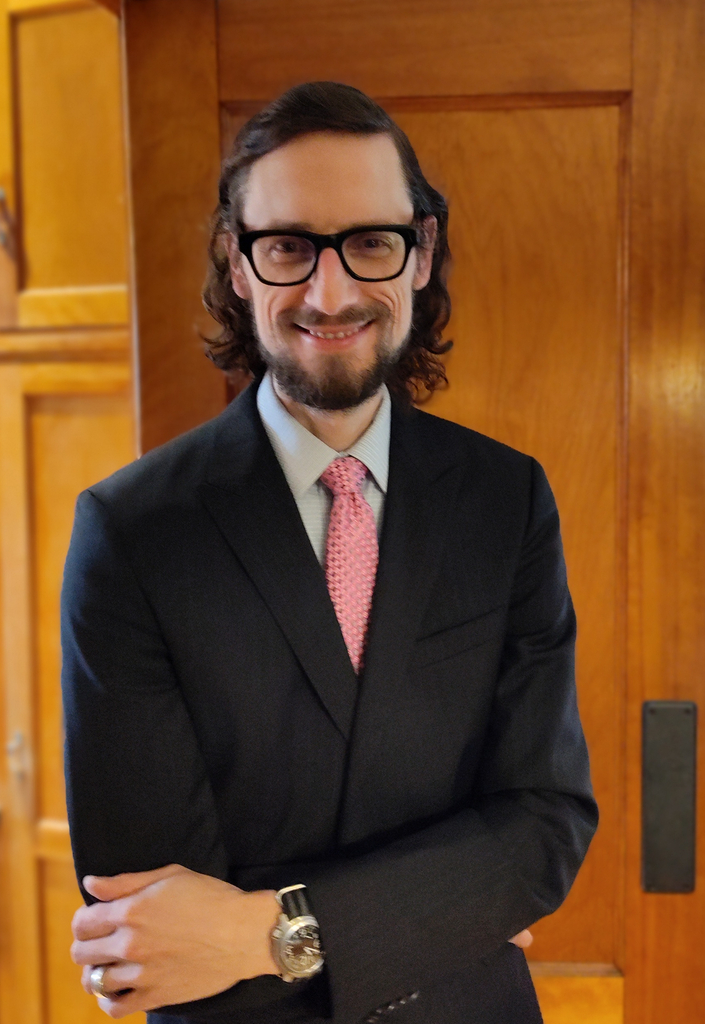
Austen Zuege is an attorney at law and registered U.S. patent attorney in Minneapolis whose practice encompasses patents, trademarks, copyrights, domain name cybersquatting, IP agreements and licensing, freedom-to-operate studies, client counseling, and IP litigation. If you have patent, trademark, or other IP issues, he can help.
